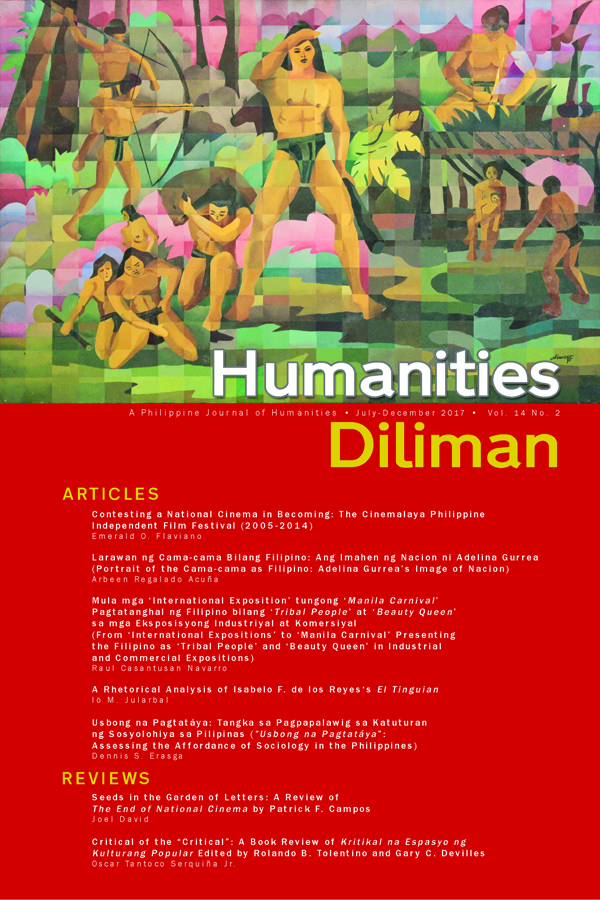A Rhetorical Analysis of Isabelo F. de los Reyes's <em>El Tinguian</em>
Abstract
El Tinguian published in 1888 was considered as the most complete study of the Tinguian at that time; it would mirror travel writings that were produced by Europeans about the region. With its accentuated notions on differentiation and otherings, de los Reyes’s “gaze” at the Tinguian served as his representation of the ethnolingusitic group to the world. El Tinguian presents itself as indeed a counter-discourse, an attempt to both refute and dispute several notions and nuances that tend to misrepresent the Tinguian. De los Reyes is in a position that shares colonial scientific knowledge with local experience and nativistic thinking which would make one assume that the legitimacy of the text should not even be questioned by anyone in the literary and ethnographic community. But what about the Tinguian? This paper theorizes that the gaze is often utilized on a race that is surmised incapable of speaking for itself. From a postcolonial stance, though himself a Filipino, de los Reyes utilizes a dominating colonial discourse and gazes on an abject other. De los Reyes’s defines and transforms the indigenous “other” into a set of categories to be utilized by the non-Tinguian as a basis for comparison and differentiation.
This paper tackles Isabelo de los Reyes’s views and representations of the indigenous “other” in his study titled El Tinguian. In writing about the Tinguian, de los Reyes attempts to produce a more localized and nativistic view of the Tinguian which tends to differentiate itself from European writings about the people. But with his use of rhetorical devices in order to give meaning and understanding of the “other”, his study still delivers itself as an outsider’s view of the Tinguian.
Keywords: Postcolonial, rhetorical analysis, travel writing, cultural criticism, Tinguian, Cordilleran history


